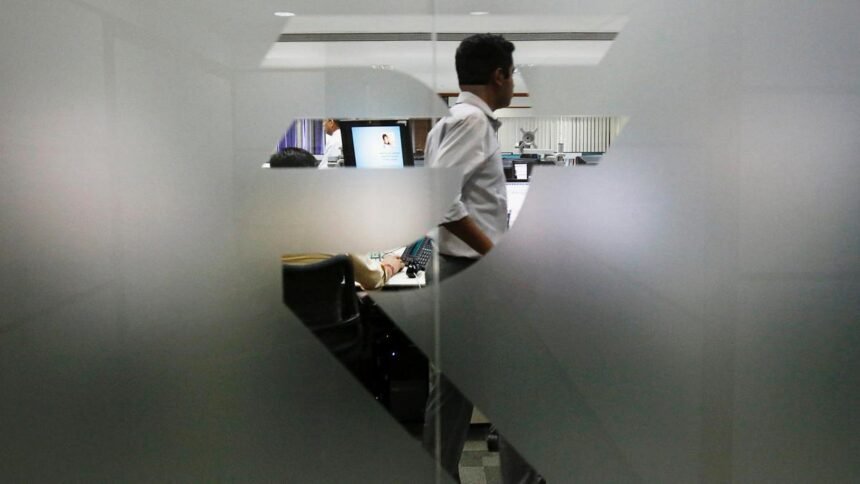At a sharp depreciation of 4.3% against the U.S. Dollar (USD) in this calendar year (January-December 2025), the Indian Rupee (INR) has become the worst performing currency in Asia, forex analysts said. It may further slide to 90 per USD if the trade deal with the U.S. does not happen in near future, they cautioned.
Stating that the INR’s performance has been weaker compared with peers like the Chinese Yuan and the Indonesian Rupiah, Akshat Garg, AVP, Choice Wealth, however, said, “It is still faring better than structurally weak currencies like the Japanese Yen and Korean Won, which continue to battle domestic policy challenges.”
“Overall, the rupee’s trajectory now hinges on global dollar strength more than domestic fundamentals,” he added.
According to Tanay Dalal, Senior Vice President, Business & Economic Research, Axis Bank, the INR has been facing depreciation pressure for many months, not so much because of the current account which has been benign, but because of capital outflows.
“INR has weakened against Asia FX (foreign Exchange), but mostly against current account surplus countries. The INR has weakened 4% CYTD (Calendar Year-to-Date), as against 2.9% in IDR (Indonesian Rupiah) and 1.3% in PHP (Philippine Peso),” she said.
Apart from this, the rest of the Asian currency complex has appreciated, largely driven by the CNY (Chinese Yuan) where the PBOC/SAFE (Currency Exchange policy of China’s central bank) have been driving this through repeated intervention and signalling, she added.
The INR touched a new low vs the USD on November 21, 2025, as it went past the 88.8 levels (that the RBI had been defending in recent weeks) and touched 89.66 levels in the spot market. Since then, it has recouped some of its losses and was on Tuesday trading at 89.22 levels against USD.
Sankar Chakraborti, MD& CEO, Acuité Ratings and Research said, “The 3.6% appreciation of the USD over the last two months has put pressure on most currencies, including the INR. India is facing twin external shocks: U.S. tariffs and high precious metal prices. The combination of adverse geoeconomic and geopolitical environments is weighing upon India’s merchandise trade deficit.”
“The sharp depreciation of the INR is the consequence of the cumulative impact of several factors. First and foremost, the Trump administration imposed 50% tariff on India hurting her exports. This led to a record $41.7 billion trade deficit in October triggering a rupee slide,” said V K Vijayakumar, Chief Investment Strategist, Geojit Investments Ltd.
“Secondly, the sharp spike in gold price this year has triggered huge investment in gold and Gold ETFs leading to 200% increase in demand for gold in October causing the gold import bill to spike to $14.72 billion in October,” Dr Vijayakumar.
He said sustained FII selling in the stock market also has contributed significantly to rupee depreciation through capital outflows. Delay in the expected trade deal between India and the US also has impacted the sentiments, he said adding “If the trade deal happens soon with fair tariff on India, that can trigger a bounce back in rupee.
“Rupee may depreciate to 90 to the dollar and then appreciate to around 88.50 in the first quarter of 2026. Singapore dollar, Taiwan dollar, Thai Baht and Malaysian Ringgit have appreciated this year, he added.
According to Mr Chakraborti the combined impact of weakness in exports and rising imports resulted in a record high merchandise trade deficit of USD 41.7 billion in October,20 25. “As such, there is now a strong likelihood that India’s current account deficit widens to 1.2% of GDP in FY26 from 0.6% in FY25,” he said.
“Meanwhile, the foreign investment inflows into the country remain subdued on account of tariff uncertainty and AI-driven market movement in the US. After net FDI clocked USD 5.7 billion of inflow in Q1 FY26, the momentum slowed to USD 1.9 billion in Q2 FY26. The FPI inflows also remain tepid at just USD 0.3 billion on FYTD basis,” he added.
He said the near-term pressure on account of any delay in the announcement of the India-US trade deal could potentially put further pressure on the INR and make it drift towards 90 levels.
“However, we believe there is a reasonable likelihood of the trade deal getting announced before the end of 2025. This could encompass getting the reciprocal rate of tariff on India from 25% currently to somewhere in line with most of the Asian peers (15-20% range),” he said.
“In such a situation, we believe there can be a possibility of near-term appreciation pressures (a move towards 88) as the announcement of the trade deal would significantly curb the relative trade disadvantage for India, he added.
For India, the tariff impact intensified because of a wider trade deficit and consistent portfolio outflows in recent weeks as global funds turned risk-averse. “The RBI did intervene, but the depreciation accelerated once the currency slipped past key psychological levels,” said Mr. Garg.
Published – November 25, 2025 08:20 pm IST





















